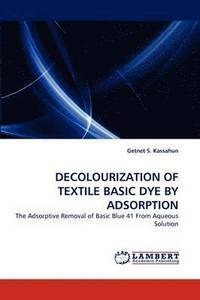
Liknande böcker
Treatment of Textile Dyes Wastewater by Coconut Coir Activated Carbon
Bok av Khan Taimur
Textile dyes have adverse effects on human beings and aquatic life. Textile dye waste is a potential source of surface and ground water contamination if it is not properly collected, treated and disposed of. The main objective of the research was to prepare activated carbon from an agricultural solid waste, coconut coir and to determine its effectiveness in removing textile dyes from aqueous solution and in textile dye waste treatment. The coconut coir activated carbon (CCAC) and a commercial activated carbon (CAC) were characterised in terms of ash content, bulk density, pH, pHZPC, surface area, micropore area, micropore volume, average pore diameter, surface morphology, surface acidic functional groups, basic sites and surface functional groups. Adsorption of four different classes of textile dyes, namely Acid Red 18 (AR 18), Disperse Red 343 (DR 343), Reactive Yellow 15 (RY 15) and Direct Blue 86 (DB 86) by CCAC and CAC were examined.
Visa pris inkl. frakt Inkl. frakt
Treatment of Textile Dyes Wastewater by Coconut Coir Activated Carbon
639 kr
Finns i lager
Treatment of Textile Dyes Wastewater by Coconut Coir Activated Carbon
639 kr
Finns i lager







